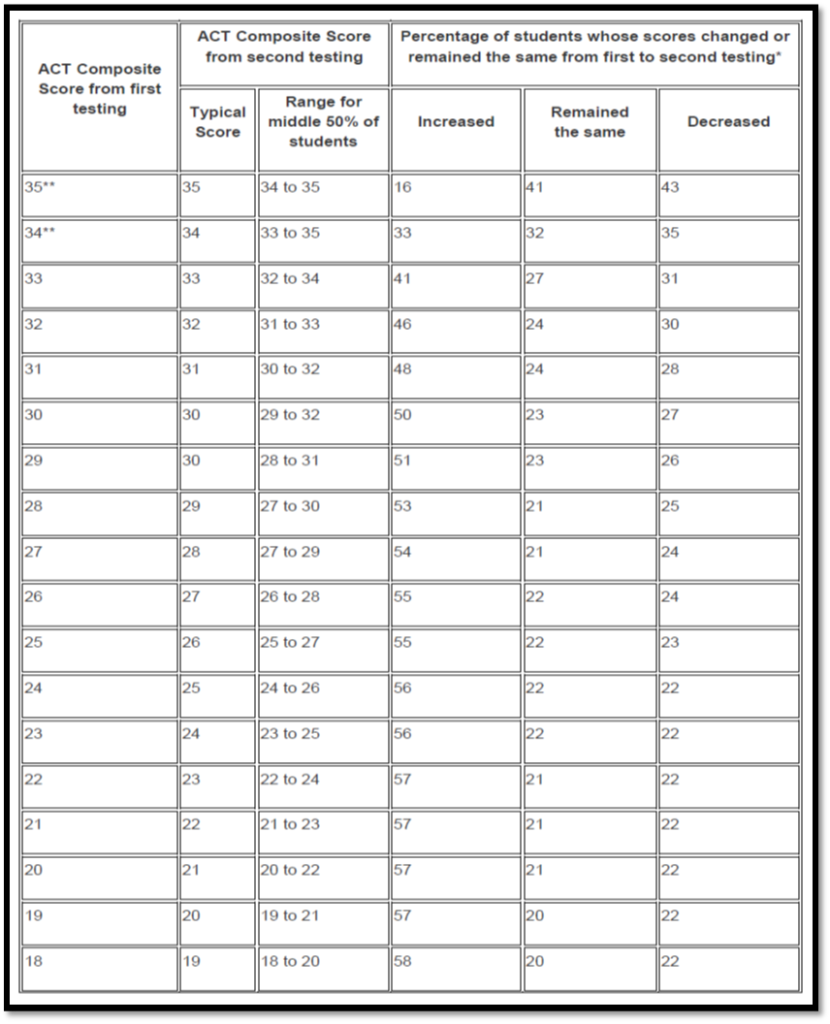ACT / SAT Background Information
Both the ACT® and SAT® are skills assessment exams which investigate the student’s ability to edit written works, conceptually apply mathematics, read critically, and analyze scientific information. University admission personnel use the exams to predict students academic preparedness for the demands of their degree programs. In addition a student’s high school grade point average, course selection – whether it’s Pre-Advanced Placement, Advanced Placement, or Dual credit courses – and extracurricular activities are reviewed for admission purposes.
Although the ACT® and SAT® assess similar academic content their assessment methods differ. Understanding the assessment differences is important before choosing which exam to prepare for. Diagrams below illustrate differences for quick reference. Use the information to help you decide which exam fits you best. Pay attention to how each exam is created to assess this information. Stop listening to the rhetoric surrounding these exams.
The ACT® and College Board in collaboration met with the NCAA Technical Advisory Board, developed updated, technically sound concordance tables that establishes a relationship between scores that measure similar (but not identical) constructs (ACT® / SAT® Concordance 2018 Guide). An ACT® scale score of 21 is aligned to an SAT® score of 1080 meaning both numerical values provide similar meaning to students and admission personnel. These scales have been thoroughly critiqued, aligned appropriately, and it is unusual to earn a score significantly different between exams.
Have you considered the possibility of completing test preparation training, increasing your score, gaining access to a university, then getting placed on academic probation your freshman year because you do not possess the study skills or fully grasp academic knowledge. While going through test preparation training you need to be focused on developing your study skills as well as academic knowledge, otherwise you may be academically harming yourself.
ACT / SAT Comparison
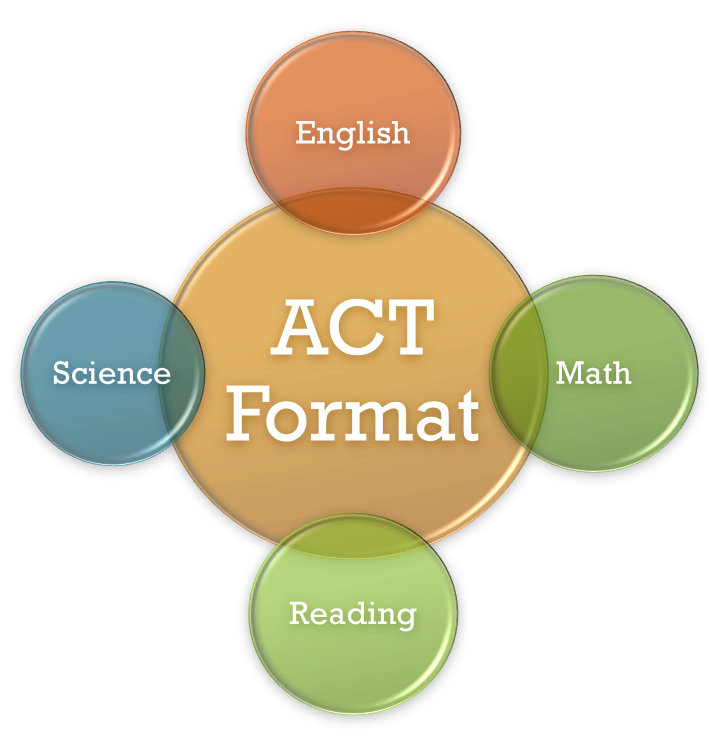
View this image and all others in a clockwise direction. This image illustrates the general format for the entire ACT® exam. The exam begins with english progresses to math and reading, then concludes with science.
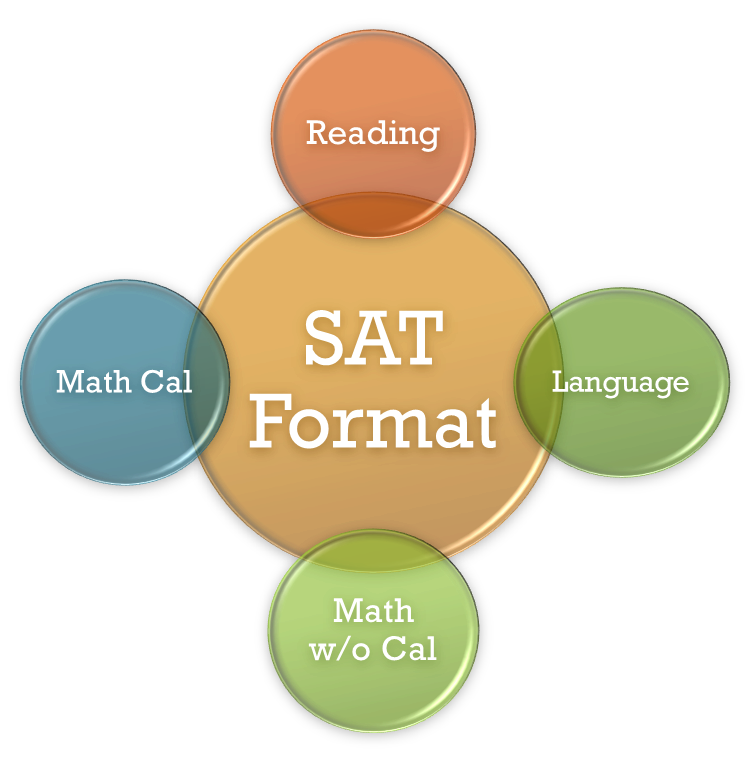
This image illustrates the general format for the entire SAT® exam. The exam begins with reading, then language, progresses to math without a calculator, and concludes with a calculator based math section. Notice that the SAT® does not have a science exam, although the SAT® embeds science information within the other exam categories. Below you will find a diagram illustrating the SAT® science information.
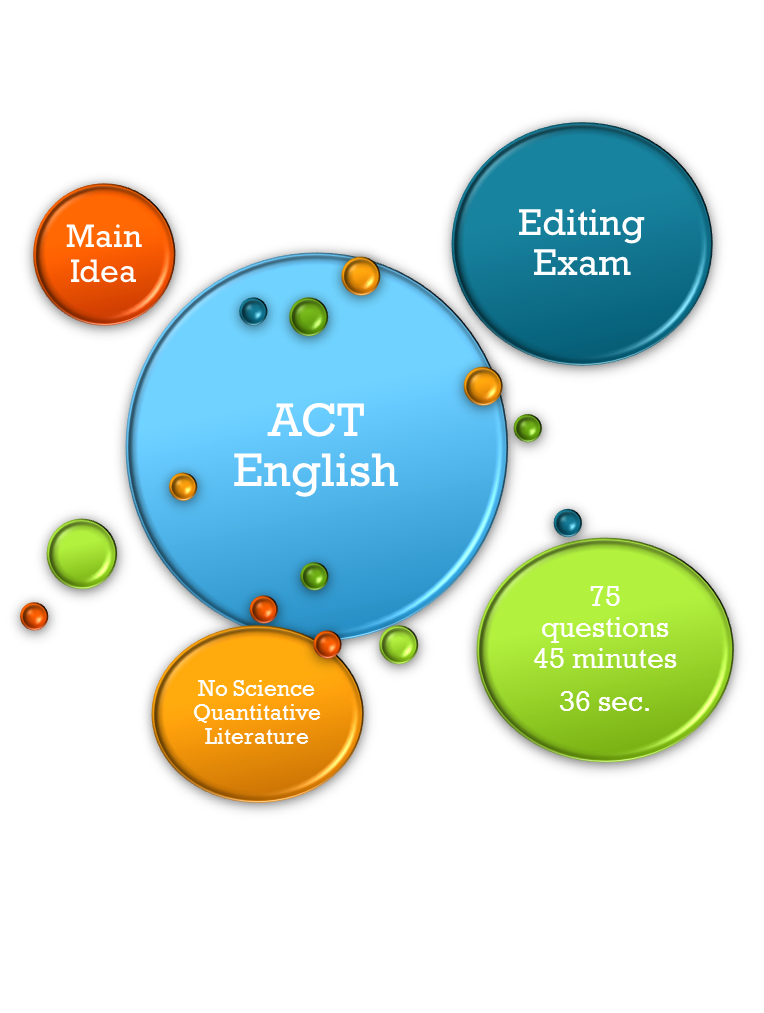
The ACT® English exam is an editing exam. Students must understand how to identify: punctuation errors, expression of main idea, redundant ideas/expressions/vocabulary, relevant supporting information, distracting information, disorganized paragraph arrangement, transitions of idea, and sentence tense (past, present, future). The essay’s are basically literary narrative stories, excluding science essays, set up with the aforementioned errors. The English exam must be completed in 45 minutes, it is divided into 5 passages with a total of 75 questions which correlates into answering each question within 36 seconds. Below is a glimpse of the ACT® English passage. Pay attention to the vocabulary.
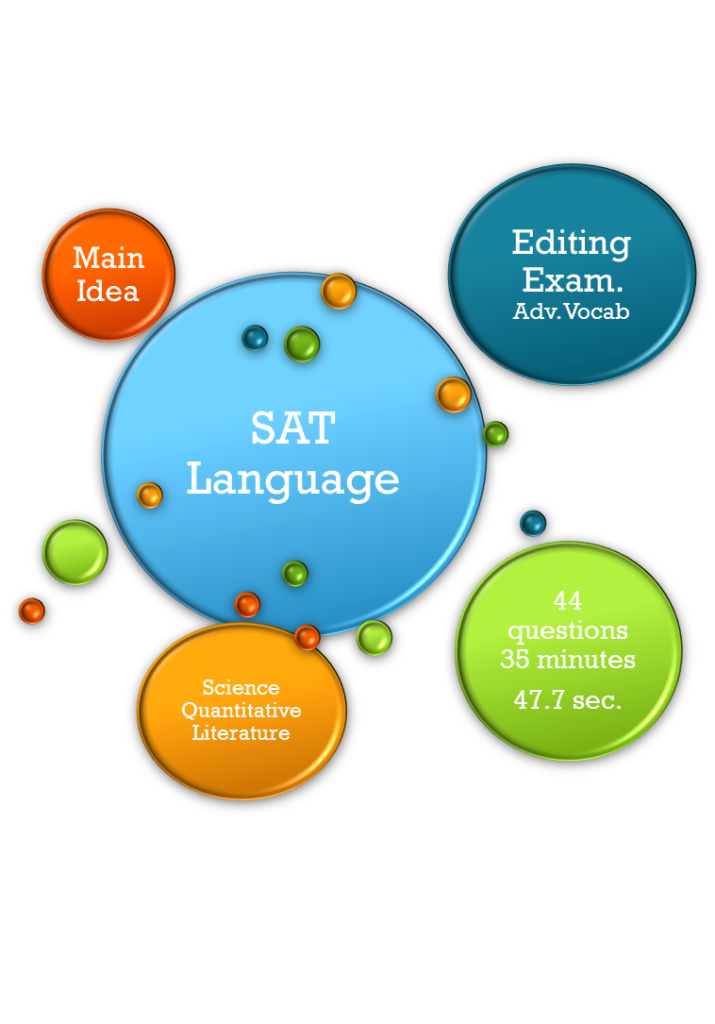
The SAT® English (language) exam is an editing exam. It is very similar to the ACT® in the fact that it assesses students for the same types of introduced errors. The English exam does include a science quantitative essay to edit. The exam contains 44 questions that must be edited in 35 minutes giving you about 47.7 seconds per question. The vocabulary expressed within this exam is more advanced than that of the ACT®. Pay attention to the vocabulary and compare it to the ACT® example.

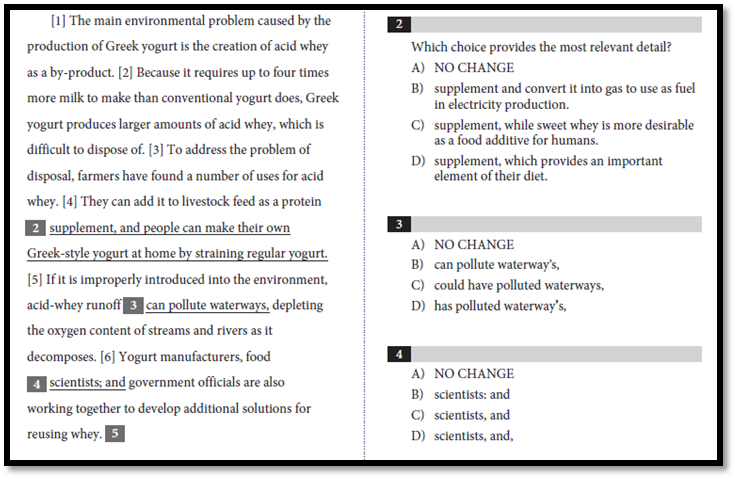
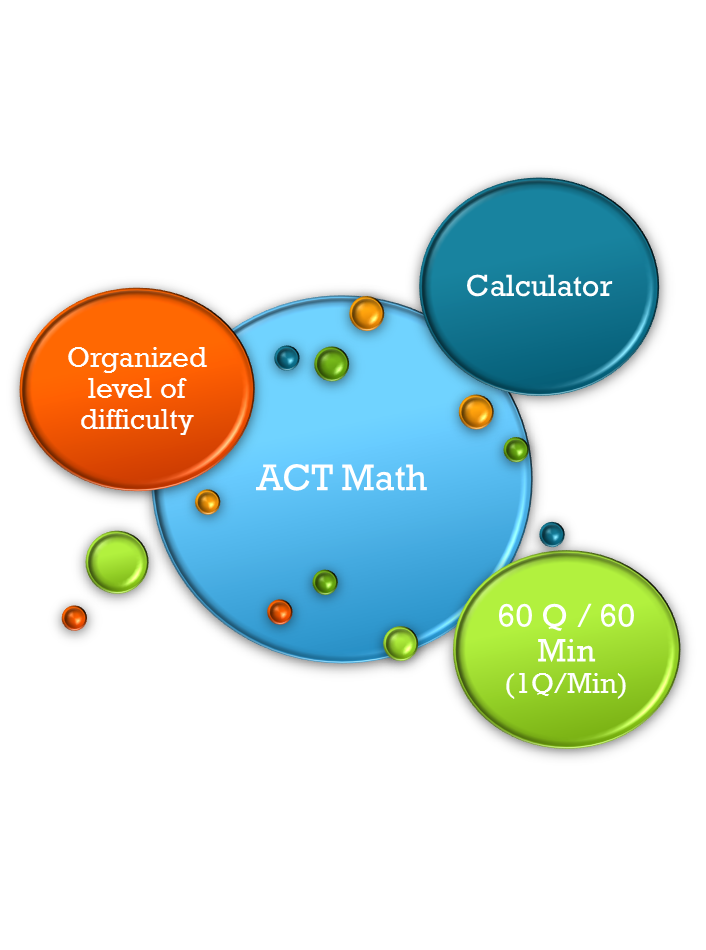
The ACT® math exam is organized in such a manner that students encounter more mechanical formatted questions within the first portion of the exam. Most of these questions will center around pre-algebra topics and intermediate algebra topics. As the exam progresses students will begin encountering intermediate algebra, then geometric, and trigonometry based questions. After the first 30 questions the exam questions become more conceptually expressed. A student will find that they must rely on their ability to apply multiple math concepts to identify solutions.
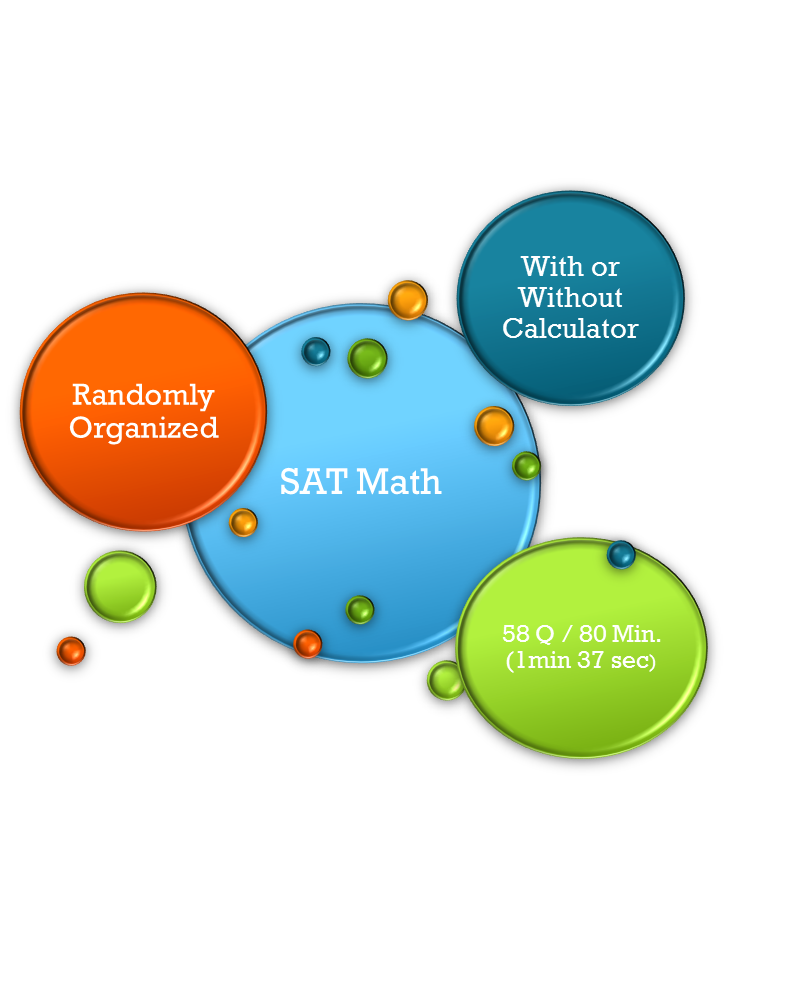
The SAT® math exam assesses student’s math abilities based on the same mathematical content as the ACT®. One major difference is it is divided into two math exam sections in which you are only permitted to use a calculator in one of the math exams. Both exams sections base their questions on pre-algebra topics, intermediate algebra topics, linear algebra topics, geometry, and basic trigonometry. In addition, the questions are not ordered from least difficult to more difficult as they are on the ACT®. The questions are also more mathematically complicated and less straight forward. Some of the math topics expressed on the SAT® are not discussed in depth during a high school math course. I have purposefully placed these two circle based question examples below to illustrate the differences between the exams.
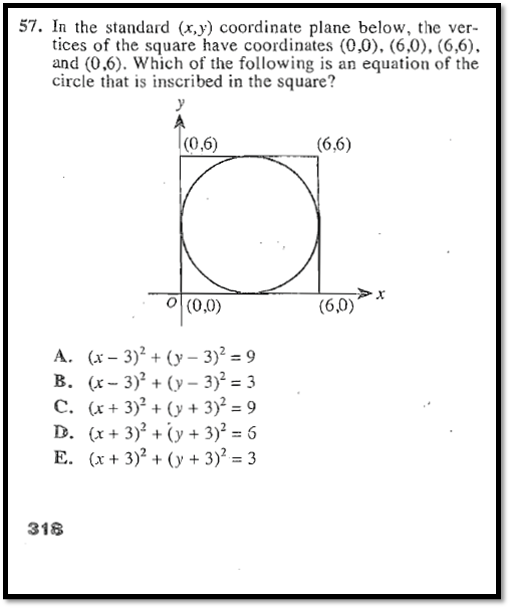
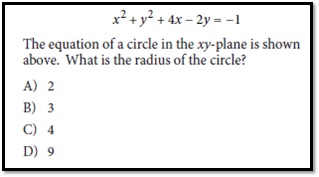
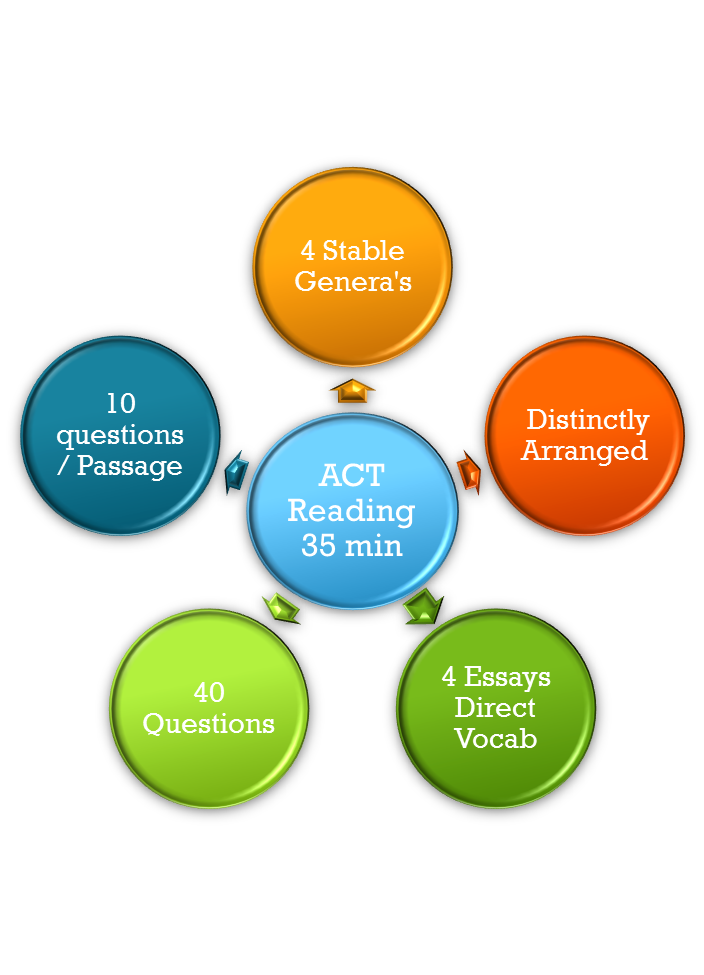
The ACT® reading exam is based upon four essay genera’s arranged in static order beginning with Literary Narrative, followed by Social Science, progressing to Humanities, then ending with Natural Science. In addition one essay will contain a dual passage and it will rotate passages. The questions will always be centered around the main idea and will be very similar between each essay. Students must be able to identify an author’s point of view. Furthermore students must interpret specified line segments which require strong critical reading skills. Character relationships must be identified. Occasionally specific words will be referred to to define their meaning or use. Other questions will be concerned whether students can identify factual details within the text. Below is an image of the ACT® Reading passage. Pay attention to the vocabulary used to express the ideas.
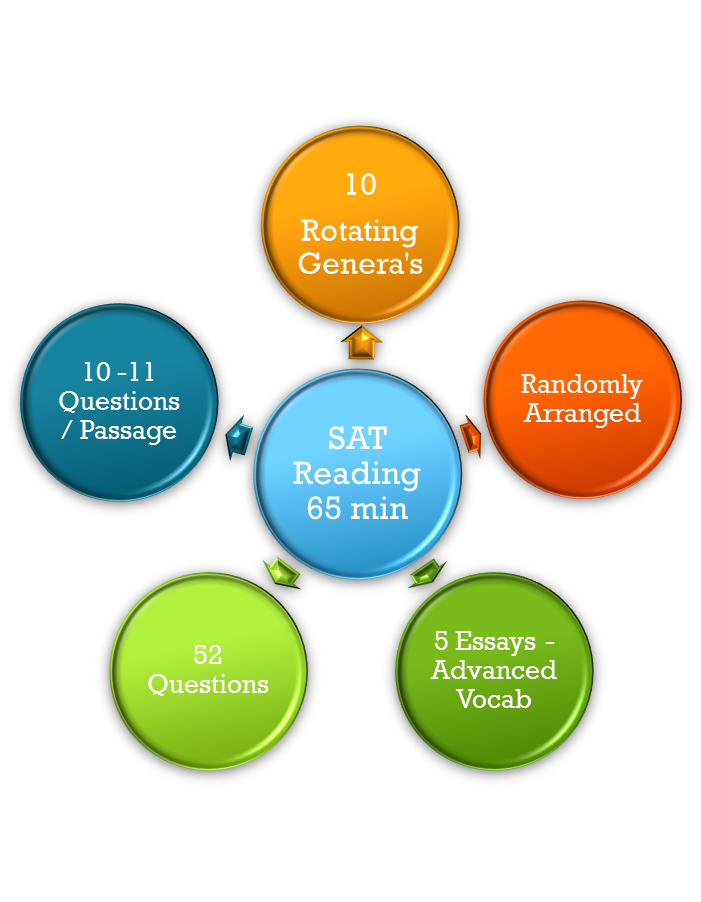
The SAT® reading exam is similar to the ACT® reading exam, yet more complex. It consists of five reading passages. One passage is formulated from a contemporary work of U.S. Literature or World Literature. Another passage will stem from a U.S. founding document, U.S. Constitution, or a historical speech. Another passage will emerge from Economics, Psychology, Sociology, or Social Science. While the final 2 passage will originate from earth science, biology, chemistry, or physics. Structurally the passages vary in length; some much longer than other. One of the five passages is more poetically expressed while the others generally fit their genera’s expression. The questions are generally designed around the theme, character relationships, and main idea. There are a unique set of questions within each passage that requires students to prove which specified line text supports the previous question which is challenging for most students. Below is an image of the SAT® Reading passage. Pay attention to the vocabulary used to express the ideas.

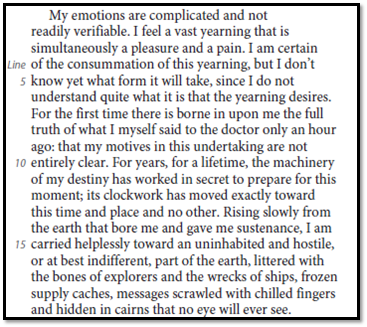
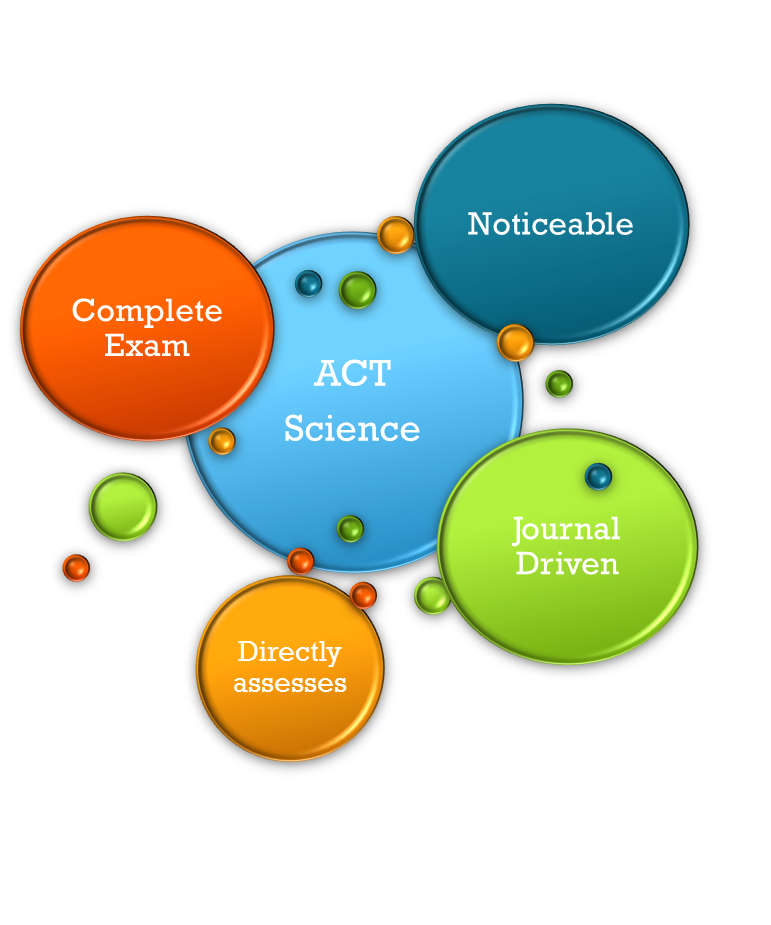
The ACT® science exam uses experimental data obtained from science journal articles. They use this information to represent fundamental science ideologies to determine if students can identify/apply/utilize: hypothesis information, multivariate experimental data, experimental design ideologies, collected data to extrapolate outcomes, hypothesis ideologies, environmental survey’s, graphical data, organize/integrate hypothetical data, identify trends within data, and various other points. Below you will find an image of the ACT® science passage. Recognize that this image illustrates published data referencing an experiment in which students must be able to interpret and answer questions pertaining this information.
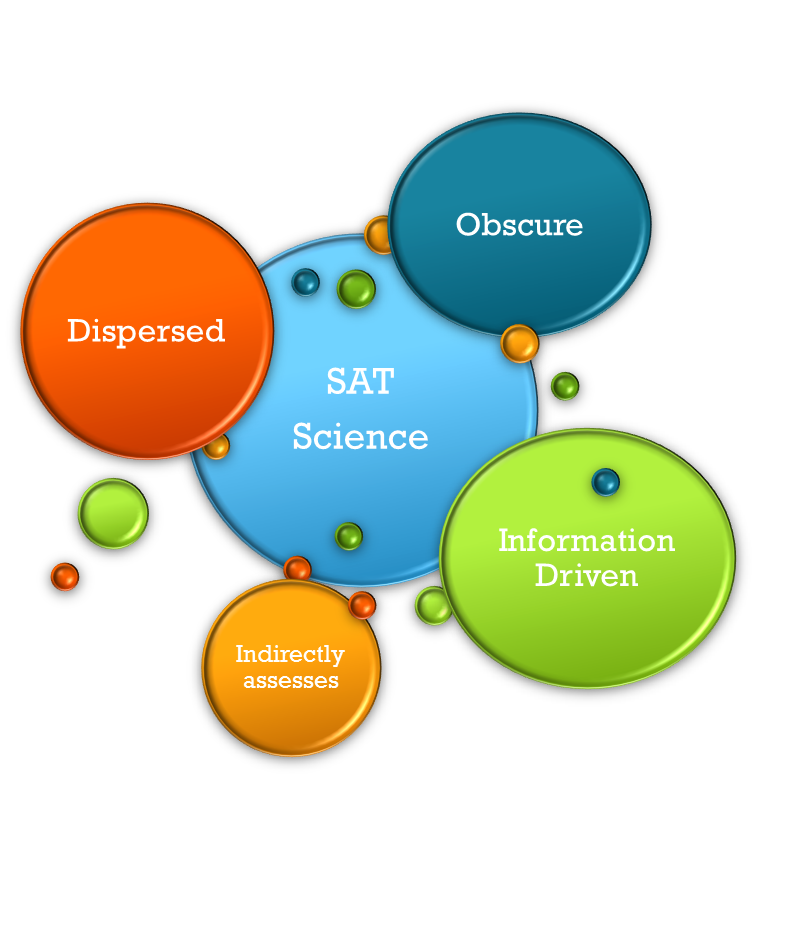
Although the SAT® does not have an individual science exam; science is distributed throughout each exam section. The language exam contains at least one science based essay to edit, a reading passage with two science passages to analyze, and science sections that appear as data within the math exam that must be interpreted. Below you will see an image of an SAT® science passage that a student must comprehend prior to answering questions.
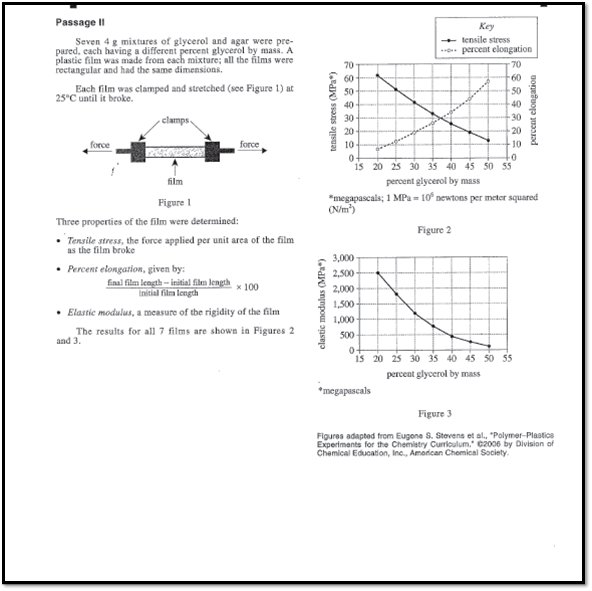
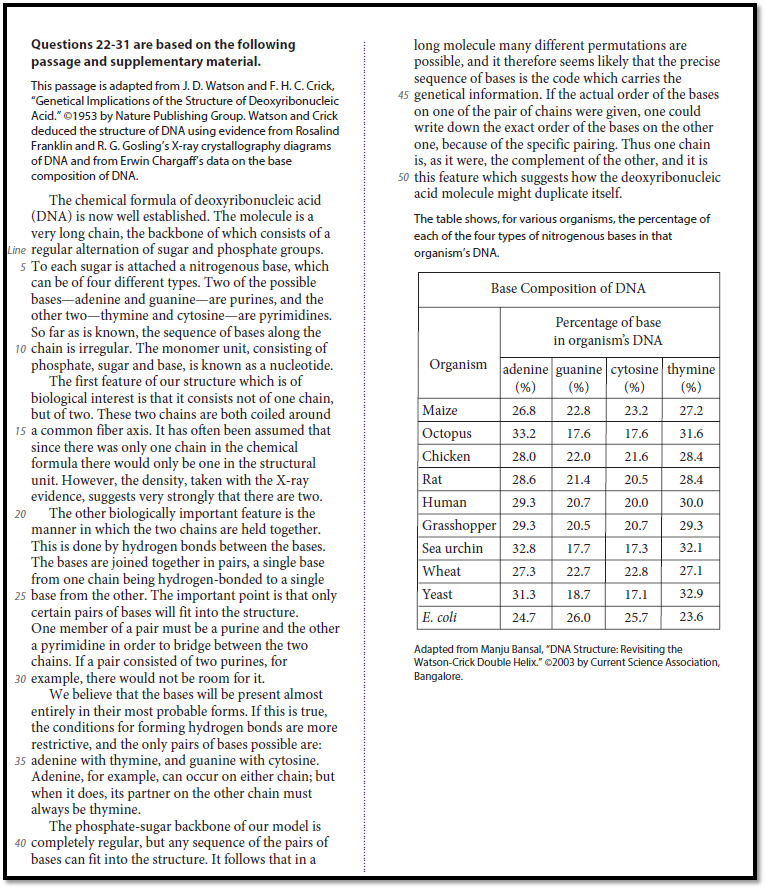
College Readiness Benchmarks - Importance
What does it mean to be college ready? College ready can carry broad implications. Can numerical standards indicate maturity? Are these scores used by colleges and universities? With these questions in mind – what- are they used for? According to the ACT® the college readiness score “is the minimum score needed on an ACT® subject area test to indicate a 50 percent chance of obtaining a B or higher or about a 75 percent chance of obtaining a C or higher in the corresponding credit-bearing college courses.” Notice the graph indicates an ACT® composite score of 21 with each of the specific categorical scores is considered college ready. An ACT® score of 21 correlates to an SAT® score of 1080. It is important to understand the implications for those who score below these standards. For students scoring below these standards it is a strong indication that they are academically deficient. Depending on the extent of a student’s deficiencies preparing students for either the ACT® or SAT® may not be worth one’s time. If a student scores a 15 on the exam then it’s a good indicator that a student has not been focusing on their education and the only reason to go through test preparation training is to improve their study skills. If another student originally scores a 25, then this student has more developed skills than someone with a 15. This student will have different avenues available to them, therefore test preparation could strengthen their academic skills to qualify for more scholarships, or gain acceptance to institutions that might otherwise have denied them.
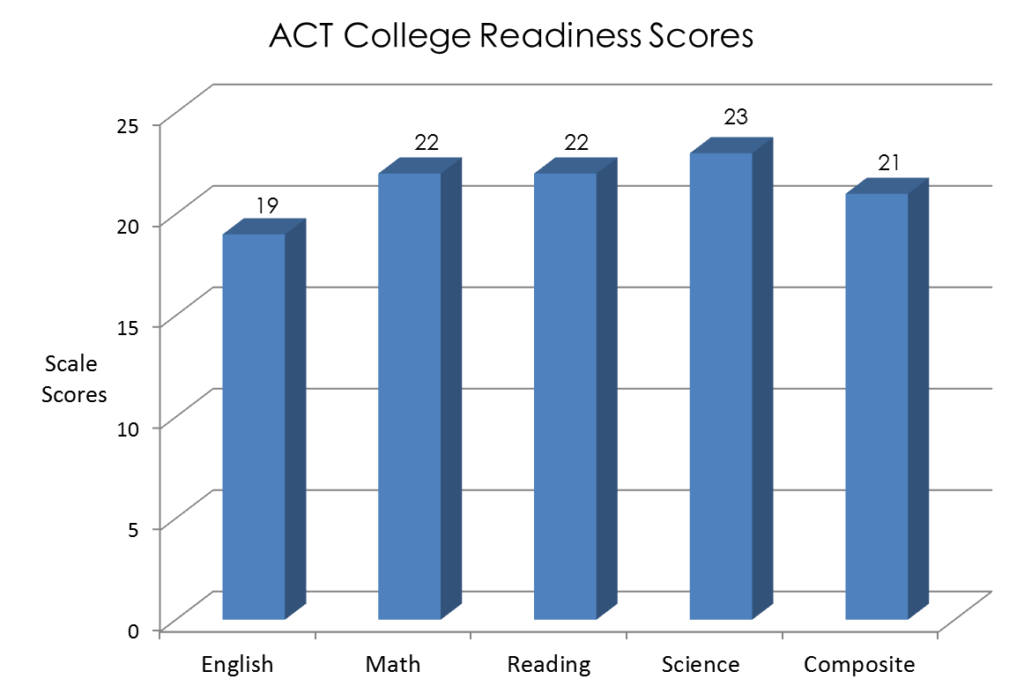
The Exam Statistics
What is the importance of the exam statistics? The data was developed by analyzing 772,000 students who took the exam two or more times. The image provided is a snippet – scale score 18 to 35 – of the complete table. The information provides a realistic picture to the inherent academic challenges of the exam that students face. It is further proof that you must correct your comprehension of academic content, with the intent to master it, otherwise your chance of significantly advancing your score will not happen. To advance your composite score it takes significant effort, planning, and academic analysis of oneself to identify, then apply the academic knowledge to improve one’s score.
The statistics can be viewed in a couple of methods. Recognize that a typical second exam score will possibly increase by 1 scale point through a scale score of 29. Secondly the table presents a score range based on analyzing the middle 50% of the student score curve. Pay critical attention to – let’s say – an initial score of 28. If we use the score range to predict a second score notice that the range specifies 27 to 30, not 28 to 30, so be careful. The table is further differentiated into categories – percent increased, remain the same, decrease – to illustrate the information more critically. Pay attention to how the data changes as one increases their score. At this point I would expect you to be wondering what a reasonable typical score increase is once you are properly trained. During my many years of experience training students I have noticed a reasonable range between 0 to 6 scale score point increase. There are occasions in which a few students will increase in the range between 6 to 10 scale score points, but they are few and far between! Significant amounts of study time must be devoted to see score increases! Significant devotion is required!
